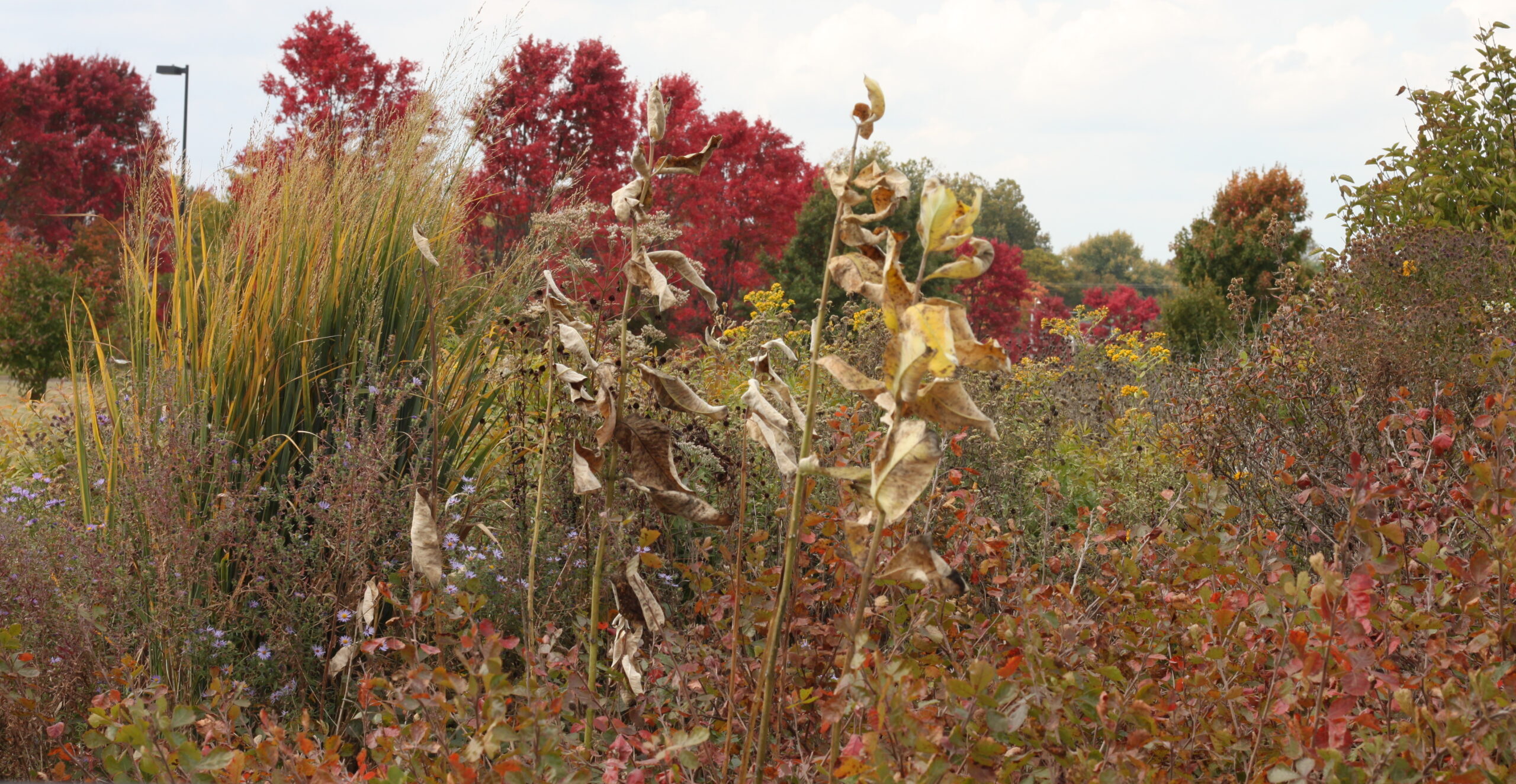For gardeners the lack of rain in the last 2 months has been a matter of concern. With every forecast of another week of nothing but sunny days, hopes for a lush colorful fall flower garden faded. Asters still bloomed but not for long, and the same with the goldenrods, snakeroots, the mistflowers and all the others. These plants moved quickly from flowering to seed production in an effort to efficiently harness their reserves of moisture. There has also been the worry that young trees and shrubs may simply die or be seriously damaged by the drought; that they might not come back with their usual vigor next spring, or not come back at all. So, many gardeners asked themselves: should I water or not?

It is good to remember that a dry fall is the norm for us rather than an exception. September and October are typically the months of lowest rainfall. But in years past, we have often gotten some relief from the fall-out of distant hurricanes as they pounded the gulf and east coasts in September. This year the big devastating hurricane that brought so much destruction to Florida passed us by entirely. We often proclaim that native plants are superior garden plants because they are adapted to our climate. If we take this statement seriously, it follows that they can cope with a dry Kentucky autumn. But what does “cope” mean? For herbaceous plants it means getting through the business of flowering, setting seed and dispersing them so that their species can continue. When this task is accomplished, their stalks die. Woody plants keep live structures above ground as they settle into dormancy, but they withdraw sap and nutrients from them to be stored in their roots during winter. In the temperate zone where we live, the lowering of rainfall during fall, together with the reduction of warmth and light, signals to plants that they better get on with the tasks of autumn. As gardeners, we expect them to do this in a graceful manner. Fall reminds us of death, of course, and in our gardens we want this to be a beautiful death. We hope for two months of color bursts, and only then are we ready to let go. But the plants may have a different agenda. When stressed by drought, fall-flowering herbaceous plants will speed up setting their seeds, and we may not get more than a few days of good bloom out of them. Woody plants under draught stress may sense that it is to their advantage to go dormant early; their leaves may dry up and drop without going through the color change we expect. It all makes sense from the plants’ point of view. A friend of mine who is dedicated to native plant gardening claims that she never waters: “they are natives, they should be able to live through these conditions.” Well, yes and no. They are natives, but if they grow in a garden they did not choose their location: in disturbed ground, compacted by construction equipment and lawn mowers. They may need our help to live in less then favorable conditions, and in the fall this may mean giving them some extra water. Also, in nature a plant is likely to survive a period of unsuitable weather. But in a garden, simple survival may not be enough. We want our plants to thrive so that they can give us visual pleasure. So a little help from the hose may be good for a native plant that is expected to perform in a garden setting. Beate Popkin
Beate Popkin
